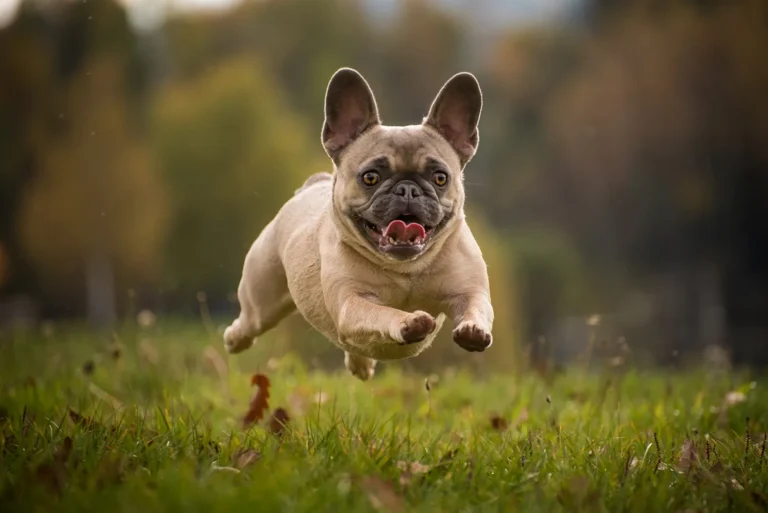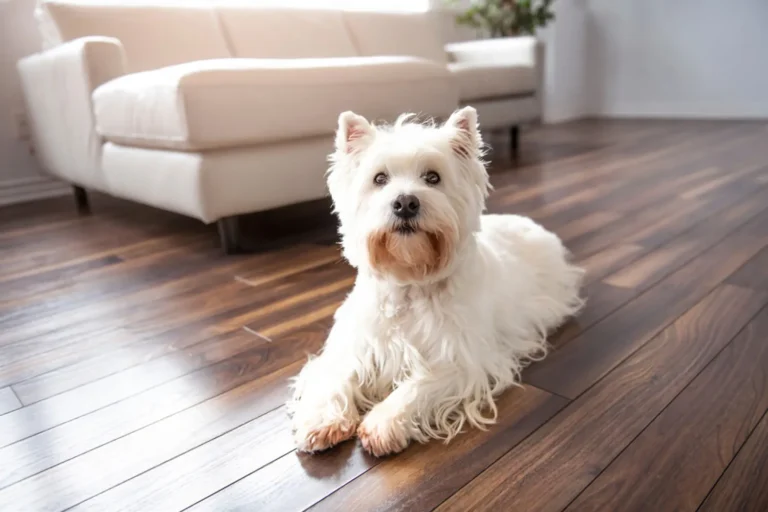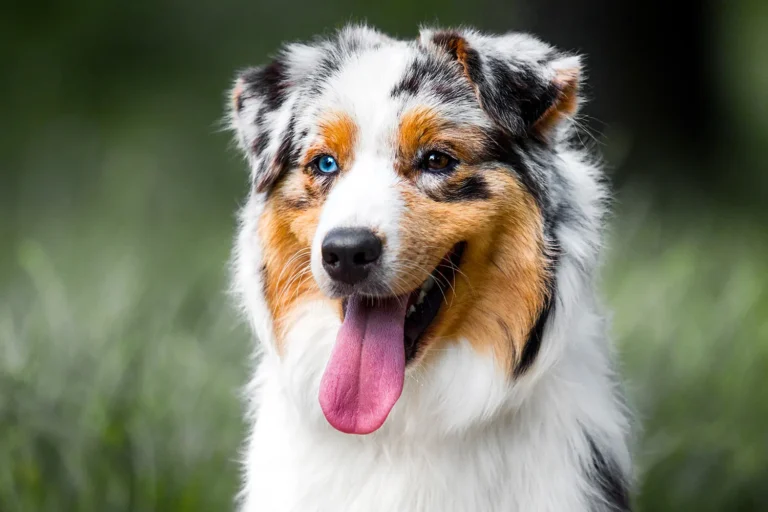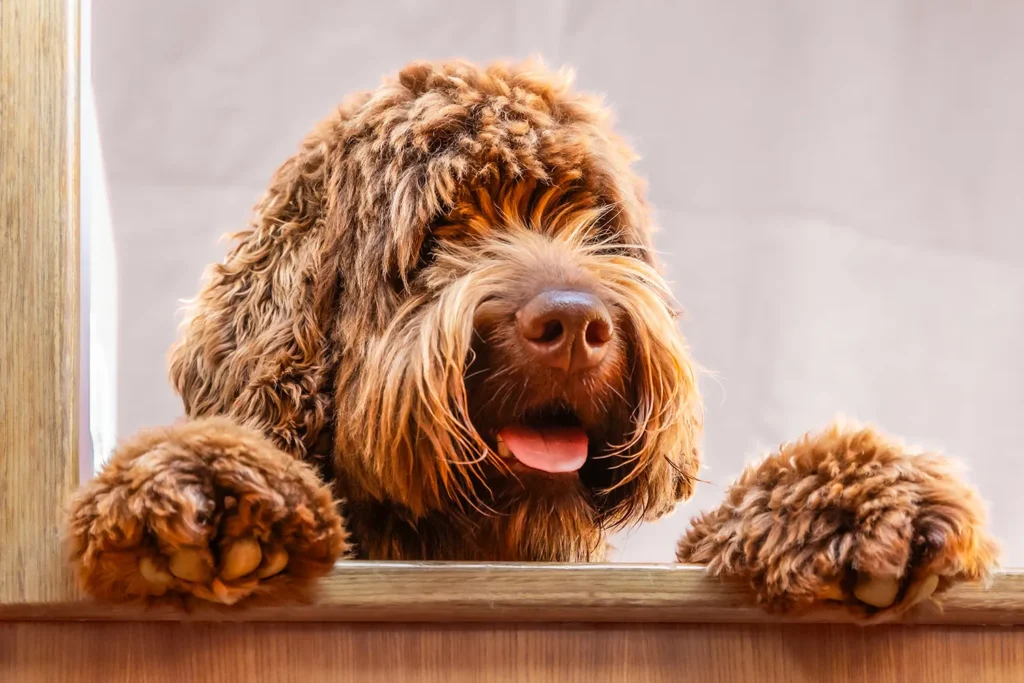
There’s nothing like that first morning chorus of tiny paws skittering across the floor pure joy in motion. If you’re dreaming of a family dog who’s equal parts cuddle buddy and playmate, the Australian Labradoodle is a gem. They tend to be affectionate, people focused, and wonderfully gentle with kids, yet always up for a backyard adventure. My neighbor’s Aussie Labradoodle practically became the neighborhood welcoming committee wagging, wiggling, and collecting belly rubs like trophies.
A little practical advice: plan on daily walks and a few goofy play sessions to burn off that happy energy. They’re eager to learn, so training feels more like a fun game treats and praise go a long way. Keep a brush handy a couple of times a week and schedule regular trims to keep their coat comfy and tidy. And don’t be surprised if you gain a shadow; these dogs love being part of every family moment, from soccer sidelines to couch snuggles.
History and Origin of the Labradoodle
Picture Australia in the 1980s: a clever idea, a lot of hope, and a kennel full of curly puppies. That’s where the Labradoodle story begins. Wally Conron of the Royal Guide Dogs Association of Australia set out to create a hypoallergenic guide dog by crossing a Labrador Retriever with a Standard Poodle. The result was a first generation hybrid that combined the Lab’s steady temperament with the Poodle’s low shedding coat. Those early litters were cheeky and full of personality though all 33 of Conron’s original pups ended up flunking out of guide dog school, they sparked a whole new breed that would go on to be recognized by the Australian Labradoodle Association.
What happened next was almost inevitable: people fell in love. With their teddy bear coats and gentle, people pleasing nature, Labradoodles quickly became one of the most sought after companion dogs. I remember meeting a young Labradoodle at a Saturday market in Melbourne he trotted over like we’d been friends for years, sat neatly for a pat, then zoomed off in those happy, goofy loops only a doodle can do. They’re smart, social, and famously cuddly, which is a dangerous combination if you’re trying to resist bringing one home.
A little advice if you’re considering one: not every Labradoodle will be the same. First generation crosses (Lab x Standard Poodle) can have coats that range from wavy to quite curly, and “hypoallergenic” isn’t guaranteed. A breeder I spoke with in Victoria explained how multigenerational lines were developed in Australia to stabilize coat and temperament over time. So ask about the generation, meet the parents, and be honest about grooming those delightful curls need regular brushing and professional trims. Do that, and you’ll have a companion born from a practical idea who’s now pure joy in everyday life.

What Is a Labradoodle?
A Labradoodle is a first generation cross between a Labrador Retriever and a Poodle, and it tends to take the best bits of both. Think bright eyes, a big heart, and that signature thick, wavy coat. They’re usually larger than other Poodle mixes like Cockapoos or Cavapoos, with a sturdy, athletic build that makes them look like living teddy bears. Their coats can be any color, though you’ll most often see Black, Brown, or Apricot. The first time I met one at our local park, I did a double take he looked like a plush toy that learned to fetch.
Because both parent breeds are historically hunting dogs, Labradoodles are quick learners with plenty of get up and go. They’re typically smart and well mannered, which is why they’re such popular family companions and often chosen as service or therapy dogs. My friend’s Labradoodle, Maple, “worked” at a school reading program she’d curl up next to kids while they practiced reading, happily soaking up pats between pages. If you bring one home, plan on giving that brain a job: short training sessions, puzzle toys, and daily exercise go a long way. Most adore retrieving and many love water mine considered any puddle a personal invitation.
That wonderful coat does ask for upkeep. I brush a few times a week to prevent tangles, and a professional groom every couple of months keeps things tidy. Many folks hope for low shedding, but it varies from dog to dog, so be prepared either way. With early socialization and clear, kind training, a Labradoodle settles beautifully into family life goofy enough to make you laugh, gentle enough to cuddle, and eager enough to learn that you’ll run out of tricks before they run out of enthusiasm.
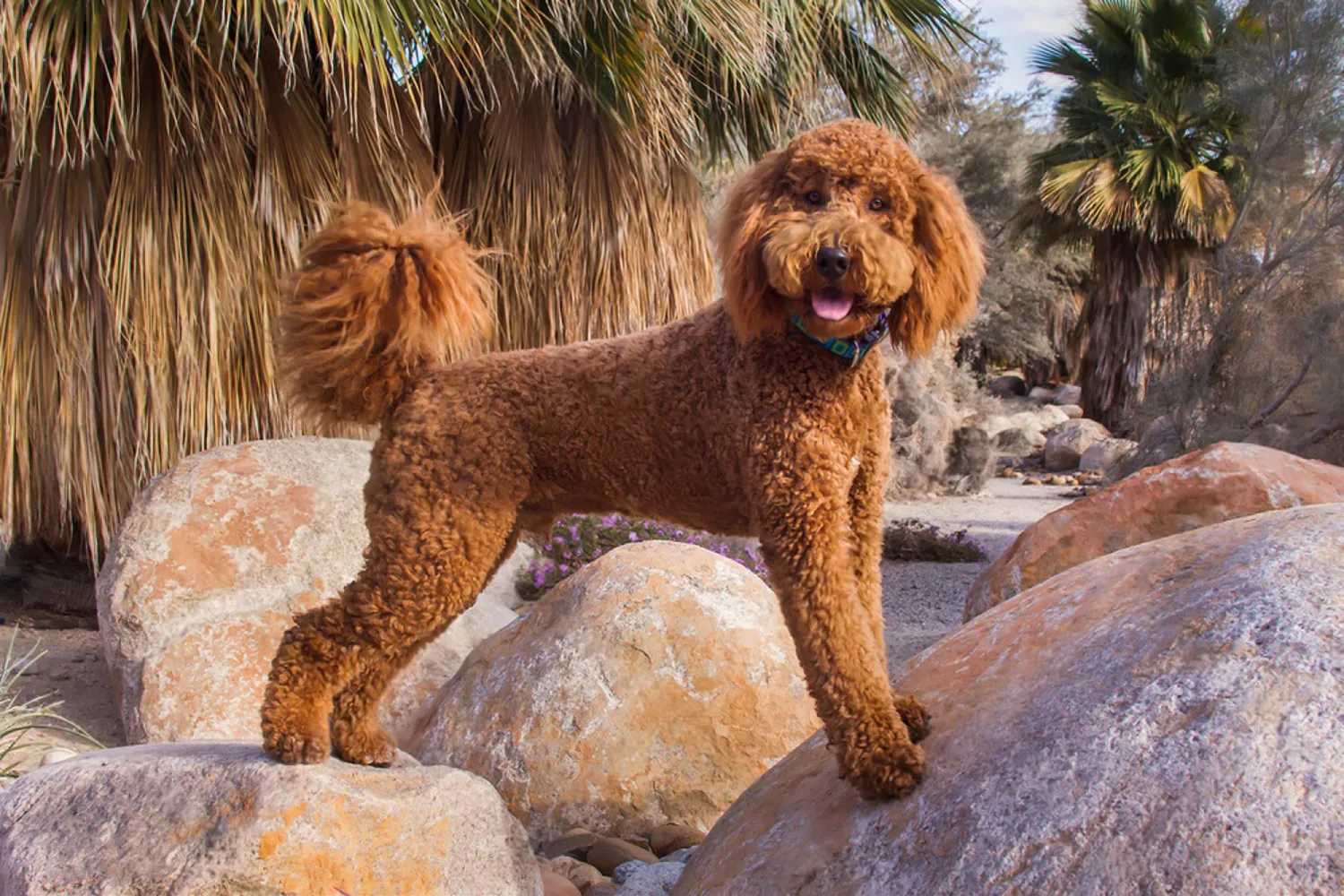
Who is a Labradoodle best for?
Families
Labradoodles are social butterflies and truly shine in busy households. They love the hum of everyday life kids coming and going, someone always up for a game, and plenty of people to snuggle. I once dog sat a Labradoodle named Pippin who practically made a schedule for himself: morning fetch with the teenagers, lunchtime cuddles with Grandma, evening walk with Dad. If your home has multiple people to share walks, playtime, and training, a Labradoodle will flourish. They’re not big fans of being alone for long stretches, so a family where someone is around most of the day is ideal. A little tip: set up a “quiet zone” with a comfy bed and chew toys so they learn to settle even when the house is buzzing.
Allergy Sufferers
Labradoodles can have one of three coat types: wool (curly), fleece (wavy), or hair (straighter). Wool coats are considered hypoallergenic, which makes some Labradoodles a great match for allergy prone folks. Disclaimer: those with wavy or straight hair may still shed. Grooming matters a lot here. Curly coats need brushing several times a week and professional grooming every 6-8 weeks to keep mats at bay. Wavier coats are a touch easier but still need regular care; hair coats will likely shed and need frequent vacuuming. If allergies are a concern, meet the specific dog before committing. My friend, who’s sensitive to dander, spent an afternoon with a wool coated Labradoodle at a rescue and had zero issues so she knew that was her lane. A HEPA air filter and a weekly wipe down of paws and coats can help too.
People Looking For Companionship
If you’re hoping for a true heart dog, Labradoodles are famously gentle and affectionate. They’re often chosen as companions for people with autism and mental health challenges, and they can excel as guides or support dogs for the blind and deaf. I met a therapy Labradoodle named Maple who would calmly lean her shoulder into your leg the moment she sensed you were nervous like a warm, living weighted blanket. They want to be part of your day, not just your décor. Plan for regular walks, puzzle toys, and basic training to channel their smarts. Teach a solid “settle” cue early on, because these dogs love to be close and may follow you from room to room. If what you’re after is a loving shadow with a wagging tail, a Labradoodle will fit right at your heels.
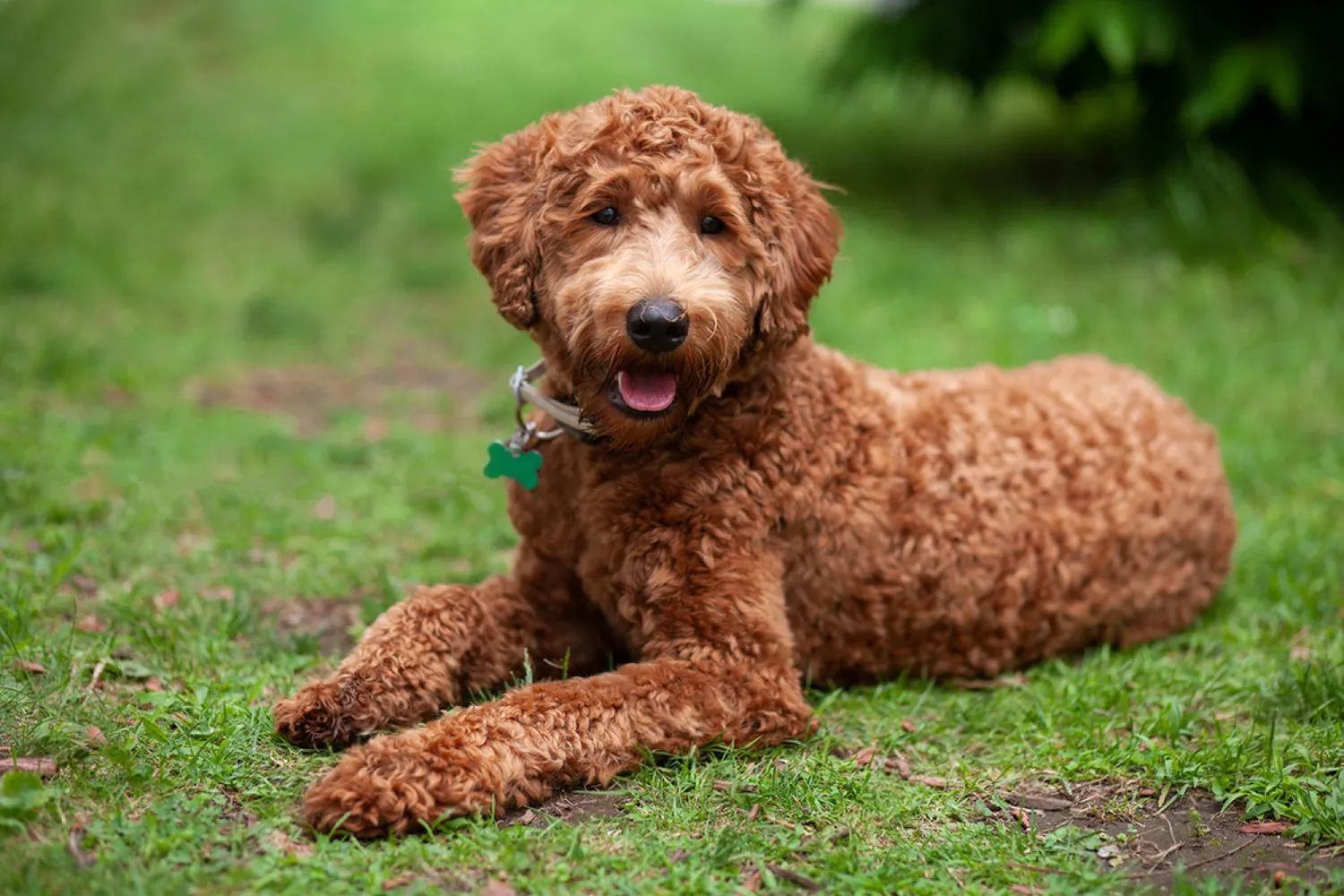
Labradoodle Grooming & Shedding
When people ask me why some Labradoodles shed and others don’t, I always start with coat type. Australian Labradoodles come in three coats, and that little detail makes a big difference in both the tumbleweeds under your couch and your grooming routine.
Wool: Think soft, tight Poodle like curls. The wool coat doesn’t shed dog hair, which is a dream for keeping your clothes clean. I once met a wool coated doodle named Olive at a Saturday market she climbed right into my lap, and not a single hair stayed behind on my black jeans. That said, those tiny curls love to tangle, so brushing is still a must.
Fleece: These coats have looser, free flowing curls, somewhere between tight Poodle curls and straight hair. Fleece coats can still shed and may bother sensitive allergies. My neighbor’s doodle, Finn, wears a fleece coat that feels like a plush throw blanket he sheds lightly, especially during seasonal changes.
Hair: More like the Labrador parent straight or slightly wavy and it sheds like a Lab. You’ll see more hair on the floor and in the car, so a lint roller becomes your best friend.
No matter the coat, regular brushing is your golden ticket against mats. I like a slicker brush followed by a stainless steel comb, working in sections (what groomers call line brushing). Pay extra attention behind the ears, under the collar, around the armpits, and along the tail those are the sneaky tangle zones. A light spritz of detangling spray helps the brush glide and prevents breakage.
Baths are “as needed,” not every weekend. If your doodle just rolled in a muddy puddle or discovered a questionable pond (been there), it’s bath time. Use a gentle dog shampoo and conditioner, rinse thoroughly, and dry completely damp curls can turn into tight mats by morning. If you have a wool or fleece coat, a blow dryer on low with a brush can keep the coat fluffy and tangle free.
Plan on nail trims regularly every 2 to 4 weeks is a good rhythm. If you hear clicking on hardwoods, it’s time. I keep a stash of peanut butter treats nearby and do one paw at a time. While you’re at it, a quick ear check and wipe each week helps, especially with those floppy doodle ears.
Many owners also schedule a professional groom every 6 to 8 weeks for a tidy trim. The at home brushing you do in between keeps those appointments quick, painless, and far less expensive. Start these habits early, keep it positive, and your Labradoodle’s coat will be as happy as their wagging tail.
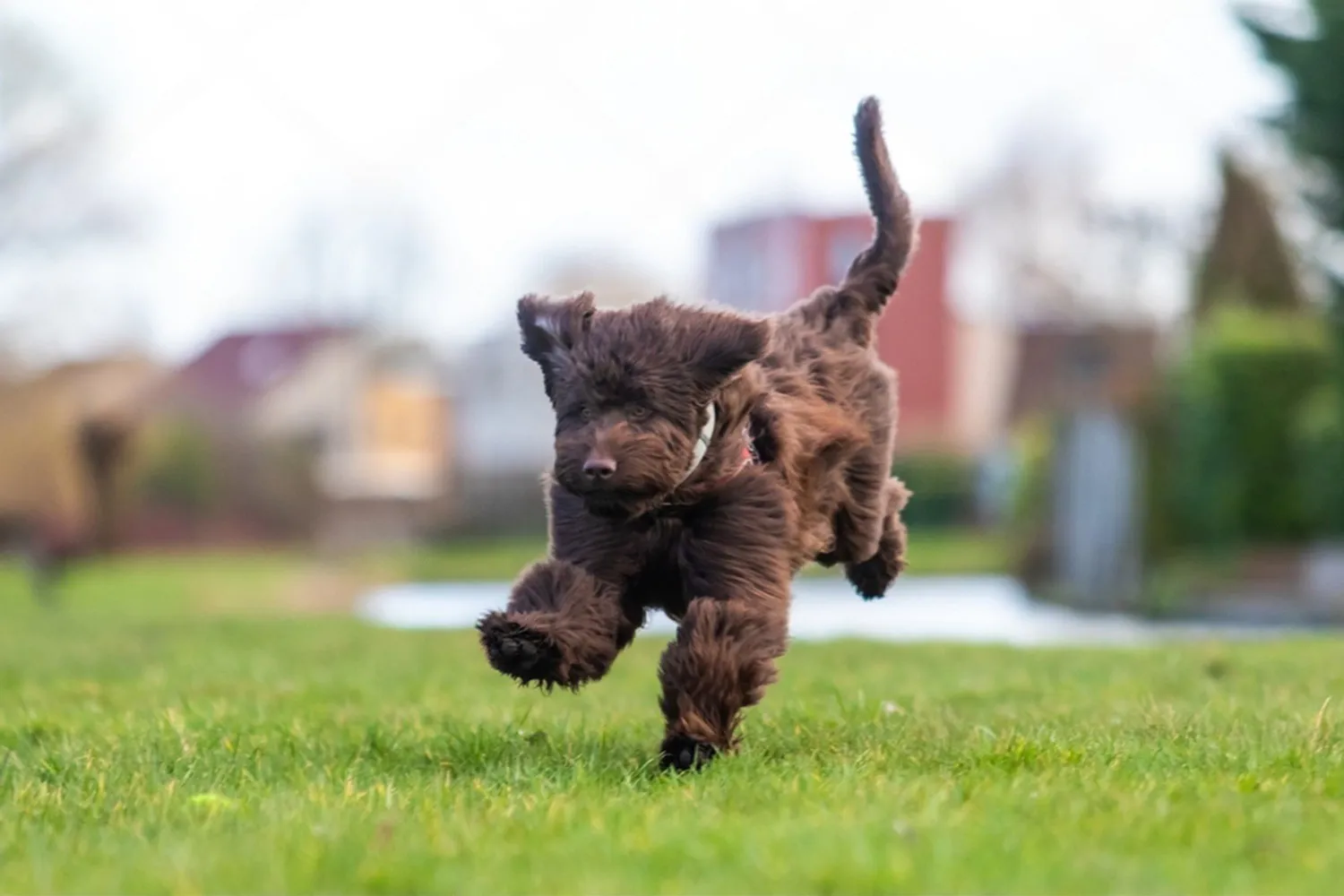
Do Labradoodles bark a lot?
Labradoodles do love to “chat,” but they’re generally mild barkers. Think of them as polite announcers rather than nonstop yappers. Mine gives a single “woof!” when the doorbell rings and then looks at me like, “Did I do my job?” Many Labradoodles use little grumbles, huffs, or a couple of alert barks to communicate especially when someone’s at the door or the squirrel committee is holding a meeting in the yard. Of course, every dog is an individual, and some lines lean a touch more vocal, but the breed as a whole isn’t known for excessive barking.
Training makes a big difference. I like to teach a “thank you” or “quiet” cue: let them alert once, say your cue in a calm voice, then reward the silence. It sounds simple, but consistency is everything. Practice with the doorbell, have friends do “fake arrivals,” and pay a treat for calm behavior. Daily exercise and mental games help too sniffy walks, puzzle feeders, and a good game of fetch take the edge off boredom barking. My friend’s Labradoodle used to bark at every passerby until she added window film at nose level and taught a “place” command on a comfy mat; problem solved. With the right routine and clear cues, barking shouldn’t be an issue, even in an apartment setting.
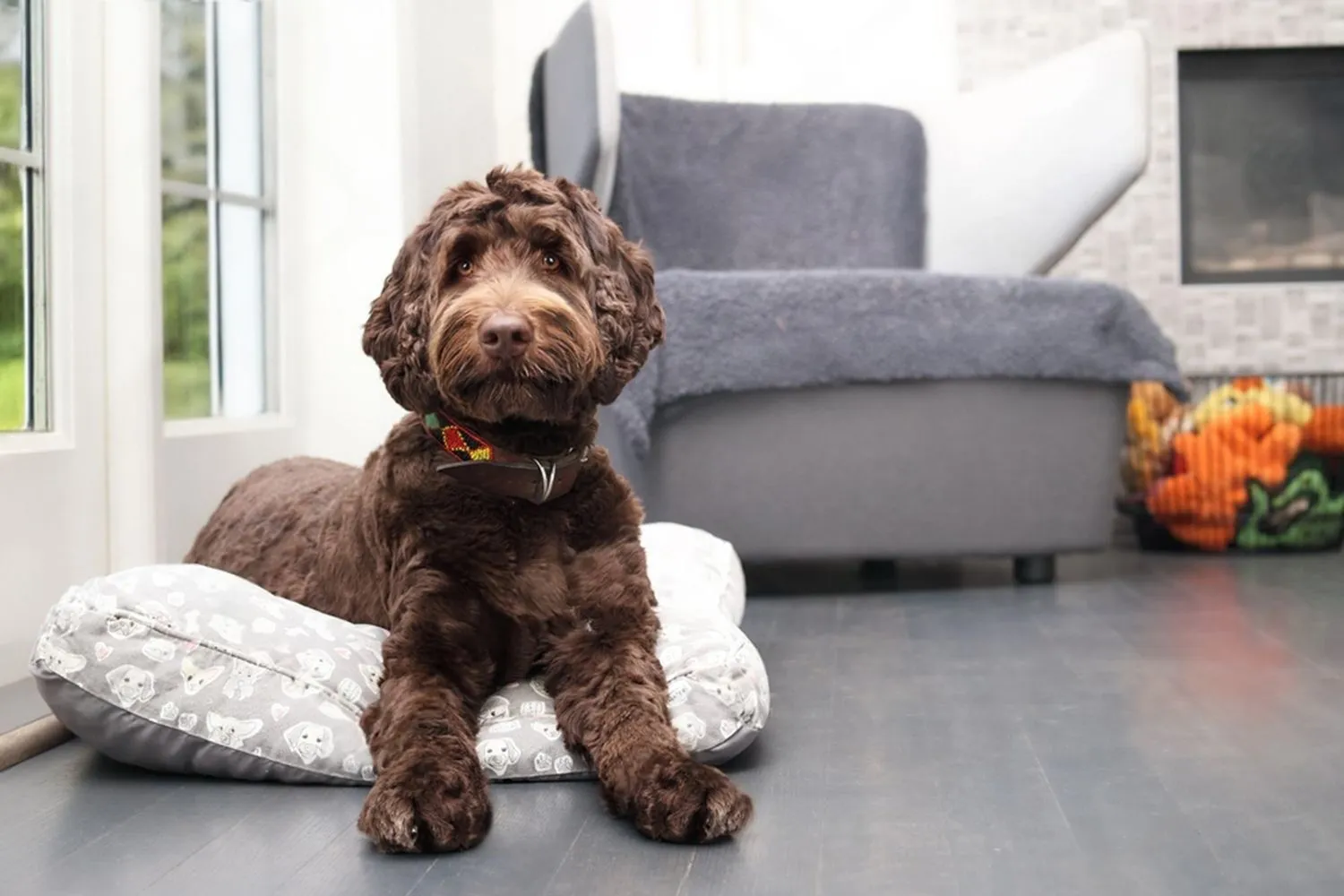
Average Labradoodle Weight and Height
At around two months old, most Standard Labradoodle pups tip the scale between 3.2 and 5.5 kg, while the Miniature little fluffballs usually sit in the 2 to 3.2 kg range. That early puppy weight can feel like a mystery, but there’s a handy rule of thumb I swear by: the “Double Up” formula. Weigh your pup at four months whatever you see is roughly half their adult weight. So if your Australian Labradoodle is about 7 kg at four months, you can expect an adult weight of around 14 kg. It’s not a crystal ball, but it’s surprisingly close for most doodles. https://en.wikipedia.org/wiki/Labradoodle
Because Labradoodles are a hybrid, size can be a bit of a lucky dip littermates can grow at different speeds and finish at different sizes. Peeking at both parents helps a lot when you’re guessing where your pup might land. I always look at paws and legs too; lanky legs and big “mitts” often mean there’s more growing to do. And remember, height is measured at the shoulder (the withers), not the head. Minis tend to hover around coffee table level, while Standards stand more in the knee high crowd. If you’re curious at home, I use a flat book on the shoulder and a tape measure down to the floor simple and consistent.
A few practical tips from living with fast growing doodles: weigh your puppy every week or two and jot it down, expect growth spurts followed by plateaus, and don’t panic if they’re a little ahead or behind the averages. My friend brought home a “mini” who politely ignored the label and outgrew his first crate in a month healthy as can be, just bigger than expected. Keep your vet in the loop, feed for steady growth rather than chasing a target number, and stick to low impact play while those joints mature. The size will sort itself out; enjoy the ride and the wobbly zoomies while they last.
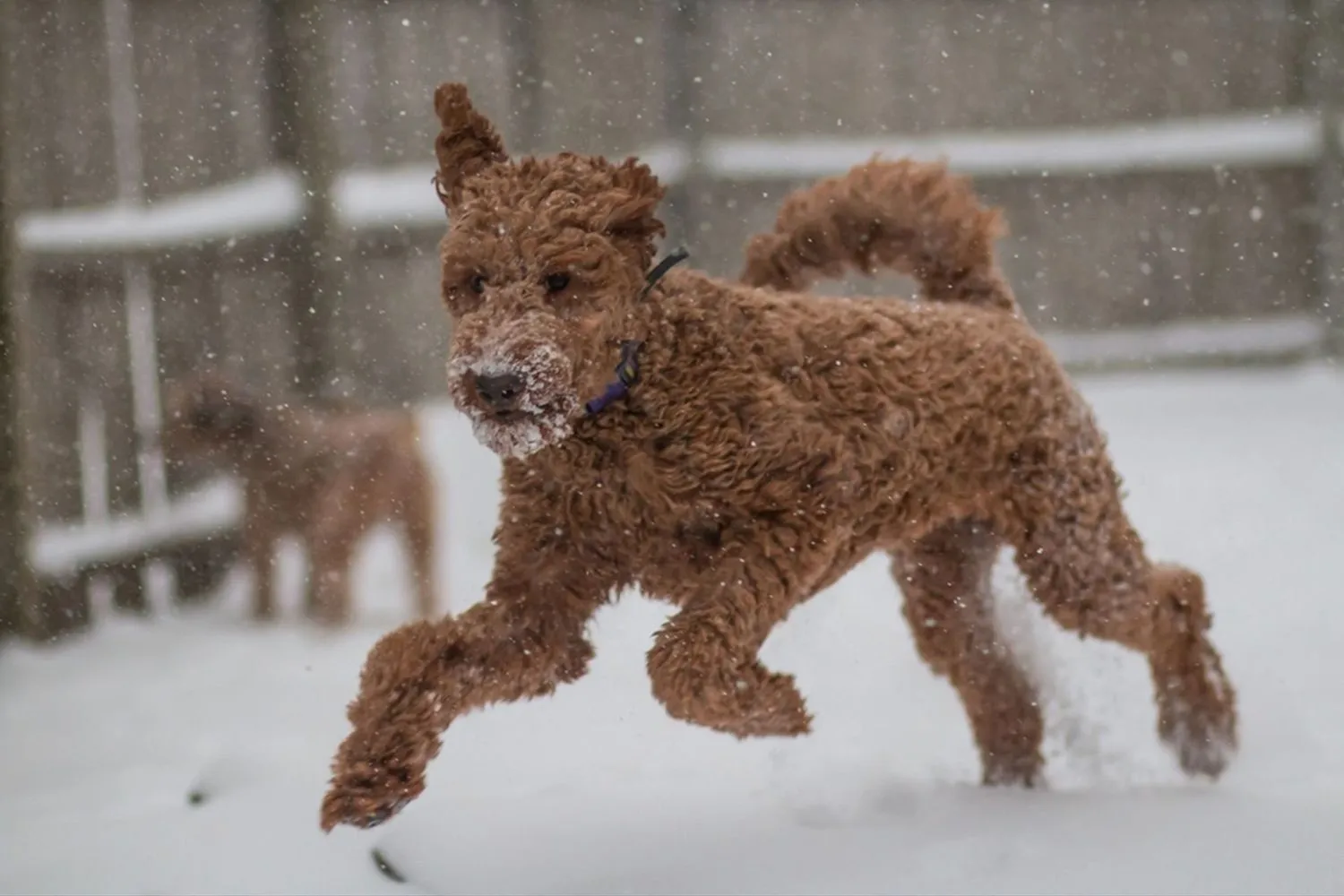
Are Labradoodles easy to train?
Generally, yes Labradoodles are bright and eager to please but that big brain needs a job. Training is essential, not optional. My friend’s Aussie Labradoodle, Waffles, learned “sit” in a day but also figured out how to open the pantry when he got bored. That’s the Labradoodle balance: talented student, clever mischief maker.
Consistency is everything. Pick your cues sit, down, off and stick to them. Everyone in the house should use the same words and even the same hand signals. I like to keep treats in a couple of spots so I can reward quickly when my dog makes a good choice. Two or three short sessions a day (think 3-5 minutes) work better than one marathon. If your doodle seems confused, it’s usually a cue to simplify, slow down, and be crystal clear.
Challenge that brain. These dogs thrive on mental workouts as much as physical ones. Puzzle feeders, snuffle mats, and hide and seek games are fantastic. I sometimes make a DIY puzzle with a muffin tin, tennis balls, and a few treats under the balls cheap, fun, and it buys me ten minutes to drink my coffee hot. Teaching fun tricks like “spin,” “touch,” or “go to mat” also channels their smarts and pays off in real life when guests arrive.
Don’t be afraid to use a lead indoors as a training tool. A lightweight house lead (only while supervised) lets you guide your dog gently away from jumping on guests or onto furniture without turning it into a wrestling match. When my doodle went through his “launch at the door” phase, I’d step on the lead as people entered, ask for a sit, and reward calm. After a few weeks of consistent practice, we faded the lead, and the polite greeting stuck.
A few bonus notes: start in a quiet room, increase distractions gradually, keep rewards tiny and frequent, and end on a win. With structure and a bit of creativity, your Labradoodle won’t just be trainable they’ll be a joy to teach.
How Do Labradoodles Behave? Temperament and Personality
Australian Labradoodles are famously sociable and affectionate true people dogs. The ones I’ve known love being part of the action, whether that’s a family movie night or a backyard barbecue. They tend to bond closely with their humans and do beautifully in family settings, often gentle with kids and polite with guests. I joke that they’re “velcro dogs,” because one I dog sat for would follow me from the kitchen to the laundry room like it was his job.
Their smarts are a big part of the package. Australian Labradoodles are quick studies and genuinely enjoy learning, but they need mental workouts as much as physical ones. Think puzzle feeders, hide and seek with treats, or teaching fun tricks like “spin” and “bow.” A trainer I met in Portland said her Labradoodle could identify six toys by name proof that a little daily brain game goes a long way.
Temperament wise, they’re generally calm and not typically aggressive when raised in a healthy, well socialized environment. That said, young Labradoodles can be bouncy and enthusiastic greeters. A bit of manners training rewarding four paws on the floor, redirecting with a chew or a sit helps channel that happy energy. Early socialization is your best friend here.
Don’t let the teddy bear looks fool you: these dogs are high energy. Most need a solid 60-90 minutes of exercise a day. Mine was happiest with a morning walk, an afternoon game of fetch, and a quick evening “sniffari.” Many enjoy swimming (hello, Labrador roots), jogging, agility, or even scent work. Once their tank is emptied, they’re wonderfully chill housemates.
One last tip: they can get bored and vocal if left alone too long. Rotate toys, offer chewables, and practice short, positive alone time sessions. Meet their need for companionship, training, and movement, and you’ll have a gentle, playful goofball who’s as steady as they are sweet.
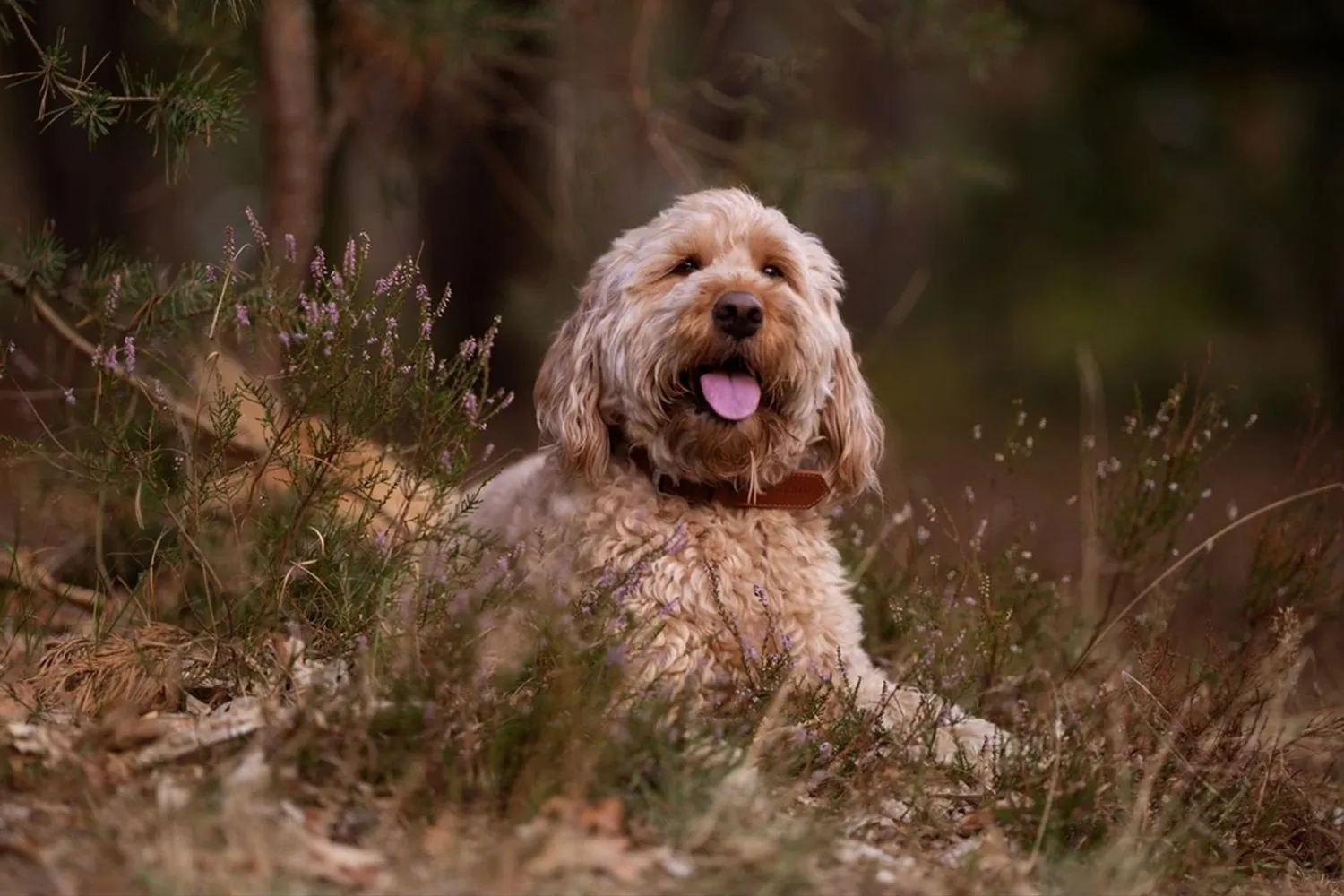
Do Labradoodles Have Common Health Issues?
Like all hybrid dogs, Labradoodles can inherit a few health quirks from their parent breeds. It doesn’t mean your doodle will have them, just that it’s smart to know what to watch for and how to stack the odds in your favor.
Hip and elbow dysplasia are big ones. That’s when the joints don’t fit together quite right, which can lead to arthritis over time. I had a friend whose Labradoodle started bunny hopping on walks as a youngster turns out it was mild hip dysplasia. With a healthy weight, joint friendly exercise (swimming became their weekend ritual), and regular vet check-ins, she still lived a very happy, active life. Good breeders screen hips and elbows through programs like OFA or PennHIP; don’t be shy about asking to see those results. And while your doodle is growing, go easy on the high impact stuff no marathon fetch sessions on hard ground or endless stairs.
Eye conditions can pop up too, especially progressive retinal atrophy (PRA), which slowly affects vision. Early clues can be trouble seeing in low light or hesitating on nighttime walks. Many lines can be DNA tested for PRA, and I like to schedule yearly eye exams with a veterinary ophthalmologist for peace of mind. A neighbor’s doodle gradually lost some night vision, and simple tweaks like keeping furniture in the same spots and using a little night lighting made a world of difference.
Another thing on the radar is von Willebrand’s disease, a bleeding disorder. Most dogs never show dramatic signs, but it’s important your vet knows before any surgery or even a dental cleaning. A quick screening test can guide safer care. I learned this the cautious way after a nail trim bled longer than usual; our vet noted it and flagged her chart for gentle handling and clotting checks before procedures.
Reputable Australian Labradoodle breeders should be upfront about family health history, and they’ll have test results to share hips, elbows, PRA, and screening for bleeding disorders. Meet the parents if you can, ask questions, and take your time. And yes, pet health insurance is worth considering; it softens the blow if something unexpected pops up. The big picture: keep your doodle lean, give them smart exercise, schedule routine vet visits, and you’ll set them up for a long, tail wagging life.

What Is the Lifespan of a Labradoodle?
Most Australian Labradoodles live a happy 12 to 15 years, and with a little luck and a lot of good care, many make it well into their teens. My neighbor’s doodle, Daisy, threw a “bark day” party at 14 and still insisted on trotting the last block home just to show off. Genetics set the baseline for any dog, but day to day choices really shape how those years look and feel.
Start with solid foundations: choose a responsible breeder who health tests their dogs, or, if you adopt, get a thorough vet check to establish a baseline. Keep your doodle lean and well fueled. A high-quality diet appropriate for their age and activity level makes a big difference think steady energy, sleek coat, and fewer tummy troubles. I used to be guilty of slipping table scraps under the dinner table, but swapping in crunchy carrot sticks kept my pup’s waistline (and conscience) in better shape.
Labradoodles are bright, social, and energetic, so consistent exercise is their love language. Aim for daily movement brisk walks, a game of fetch, or swimming for gentle, joint friendly cardio. When mine was a rambunctious youngster, puzzle feeders turned mealtimes into mini brain workouts and saved my shoes from boredom nibbles. As they age, shorten the outings and let them linger on “sniffaris”; those nose to ground strolls are surprisingly tiring and very satisfying.
Don’t skip preventive care. Annual vet visits (twice a year for seniors), dental cleanings or at home brushing, and keeping up with flea, tick, and heartworm prevention can add healthy, comfortable years. Grooming matters too clean ears, trimmed nails, and a tangle free coat help avoid infections and aches. If your doodle is prone to joint stiffness, ask your vet about weight management and joint support options; a few small changes can keep them springy much longer.
With good genes, smart choices, and plenty of everyday TLC, your Labradoodle has a great shot at a long, tail wagging life in that 12-15 year sweet spot.
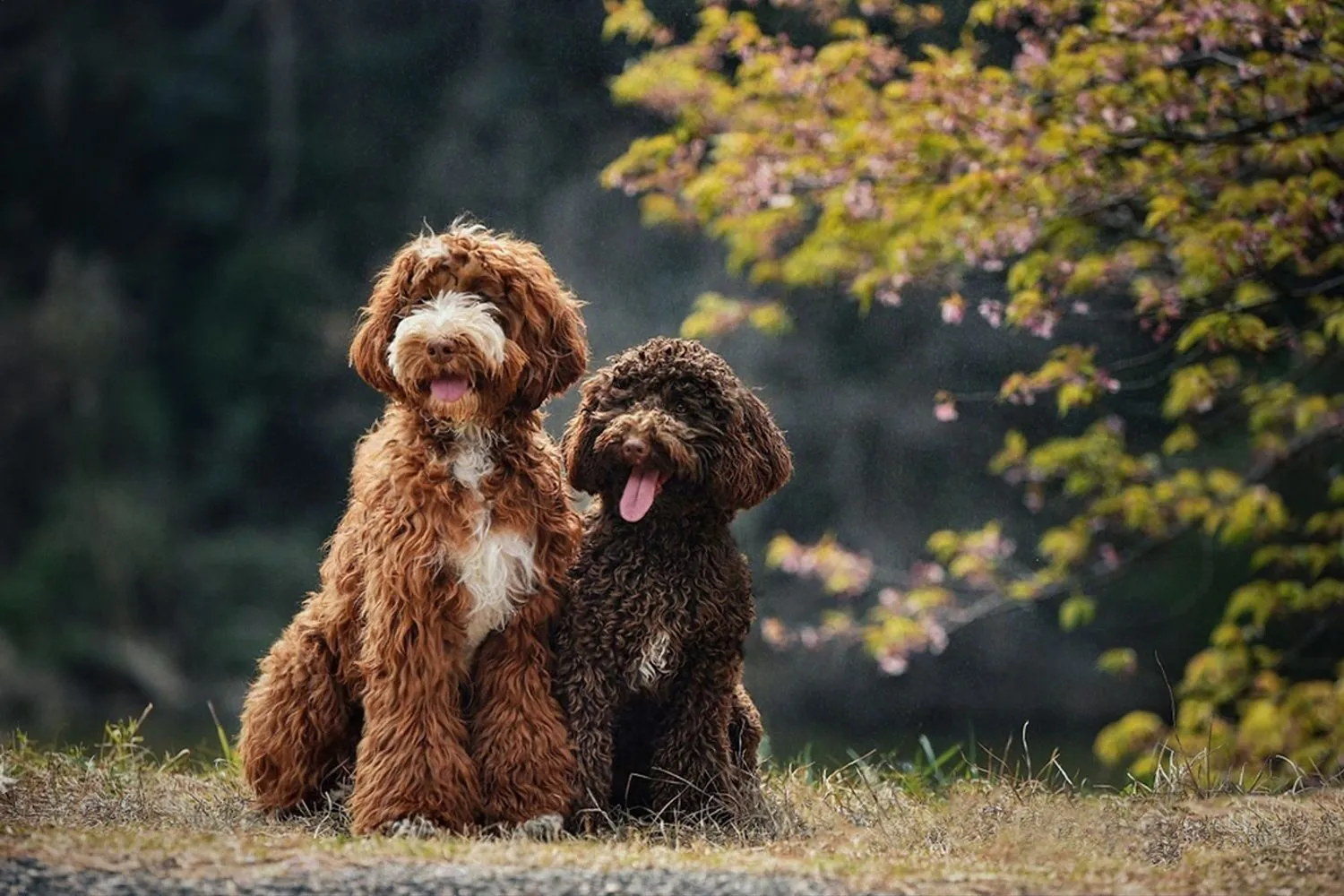
How much does a Labradoodle need to be fed?
Labradoodles come in all sizes (from mini to standard), so how much to feed really depends on your dog’s age, weight, and energy level. I start by following the feeding guide on the food bag, then adjust based on body condition: you should be able to feel ribs without pressing hard and see a defined waist from above. Puppies usually do best with 3-4 small meals a day; adults typically do well on two. Keep fresh water down, measure meals with a scoop or kitchen scale, and remember to count treats ideally they’re no more than 10% of the day’s calories. One time I learned the hard way that “eyeballing” portions turned my doodle into a fluffy potato; the measuring cup brought her waist back.
As for what to feed, you’ve got a few good options, and many owners mix and match:
– Kibble: Dry food is the most popular choice for a reason. It’s convenient, cost-effective, and usually complete and balanced. I like to rotate protein sources every couple of months and use a slow feeder bowl so meals last longer for my gobbler.
– Wet food: Canned meat and vegetables can be extra tasty and add moisture. I often stir a spoonful into kibble on picky days. Just watch portions those cans can be calorie dense and pop leftovers in the fridge.
– Cooked food: If you enjoy cooking, you can prepare simple meals with meat and veggies. Do your homework to keep it balanced and safe. Avoid foods dogs can’t eat, like onion, garlic, tomatoes, and other no no’s such as grapes, chocolate, xylitol, and cooked bones. When I batch cook turkey and veggies, I portion and freeze, and I asked my vet for guidance on supplements to prevent nutrient gaps.
Variety can be great for Labradoodles, but switch foods gradually over 5-7 days to avoid tummy upsets. Skip free feeding, do a quick weekly “rib and waist” check, and if you’re ever unsure about amounts or ingredients, your vet is your best co pilot. A well fed doodle is a happy, zoomy doodle!

Labradoodle FAQs
Where can I buy a Labradoodle puppy?
Start by browsing local Australian Labradoodle breeders online and take your time reading through their websites and reviews. Look for breeders who are transparent about health testing, let you meet (or video meet) the parents, and happily answer questions about temperament and grooming. If the price seems too good to be true, it usually is suspiciously low prices can be a sign of a puppy farm. I always ask to see where the puppies are raised, what the contract looks like, and what kind of early socialization they provide. A waitlist is often a good sign. Checking breeder affiliations with reputable Labradoodle organizations can help too. And don’t forget to peek at doodle specific rescues now and then a gem pops up there.
Is a Labrador Retriever a hypoallergenic dog breed?
Nope. Labradors have straight or wavy hair and they do shed, which can set off allergies. Some Labradoodles, depending on their coat type, shed less and can be easier on allergy sufferers, but even then, no dog is truly 100% hypoallergenic. If allergies are a concern, spend time with an adult dog from the breeder’s lines before committing. I once brought my sneezy cousin to meet a potential puppy ten minutes later we knew that particular coat wasn’t going to work. Regular grooming, vacuuming, and HEPA filters can make a big difference too.
Why are Labradoodles considered bad?
They aren’t “bad,” but there are a few reasons people raise concerns. As with any cross breed, Labradoodles can inherit health conditions from either side of their family tree, which is why responsible health testing is so important. There are also ethical worries when breeding is done carelessly or purely for profit. A good breeder will screen for common issues, prioritize temperament, and be upfront about the grooming and training commitment you’re signing up for. One friend fell in love with the teddy bear look and then learned the hard way that a doodle coat mats if you skip brushing now she swears by her weekly brush and bath routine and has a groomer on speed dial. In the right home, a well bred Labradoodle can be a joyful, sturdy companion.
What is the rarest Labradoodle colour?
In Australian Labradoodles, a rich red coat think Irish Red Setter vibes is considered the rarest. These reds typically have black noses and an all over auburn coat. They’re head turners, for sure. I met one at the park named Chili who drew a crowd in minutes. Just remember, color should come after health and temperament on your priority list. Reds can mean longer waitlists and higher prices, so plan ahead and be patient. The right pup is worth the wait.
Disclaimer:
This article is for informational purposes only and doesn’t replace professional veterinary or training advice. Always consult a certified vet or dog trainer for guidance specific to your pup.
